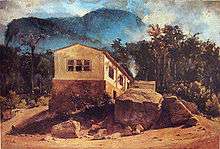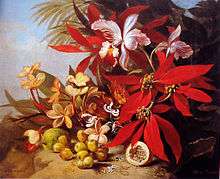Agostinho José da Mota
| Agostinho José da Mota | |
|---|---|
 | |
| Born |
18 June 1824 Rio de Janeiro, Brazil |
| Died |
21 August 1878 (aged 54) Rio de Janeiro, Brazil |
| Nationality | Brazilian |
| Known for | Painting |


Agostinho José da Mota (b. 18 June 1824 Rio de Janeiro, d. 21 August 1878 Rio de Janeiro) was a Brazilian painter and teacher.
Biography
His inclination for art emerged early in childhood and developed over time. His willingness to learn drawing and painting was huge. Finally reached the age to attend school where he would develop his great vocation.
In 1837 he enrolled in the Imperial Academy of Fine Arts. He was a brilliant student and received the prize of travel to Europe in 1850.
He left the following year for Rome where he studied under the guidance of French landscape painter Jean-Achille Benouville. He spent 8 years in Italy and produced works of true merit there.
Returning to Brazil in 1859 he began to teach at the Academy. Initially he occupied the chair of drawing and then of landscape. He contributed several times to the general exhibition of fine arts, receiving the gold medal in 1852, the Order of the Rose in 1868 and the Order of Christ in 1871.
Amongst his pupils, Modesto Brocos, Henrique Bernardelli, Pedro Peres, Firmino Monteiro and José Maria de Medeiros became well known.
The Empress Teresa Cristina commissioned several still lifes from him, a genre in which he excelled.
He was the pioneer of outdoor painting in Brazil, preceding Georg Grimm, who received the credit for this.
In later life he faced financial difficulties, having to paint advertising hoardings to survive.
| Wikimedia Commons has media related to Agostinho José da Mota. |
References